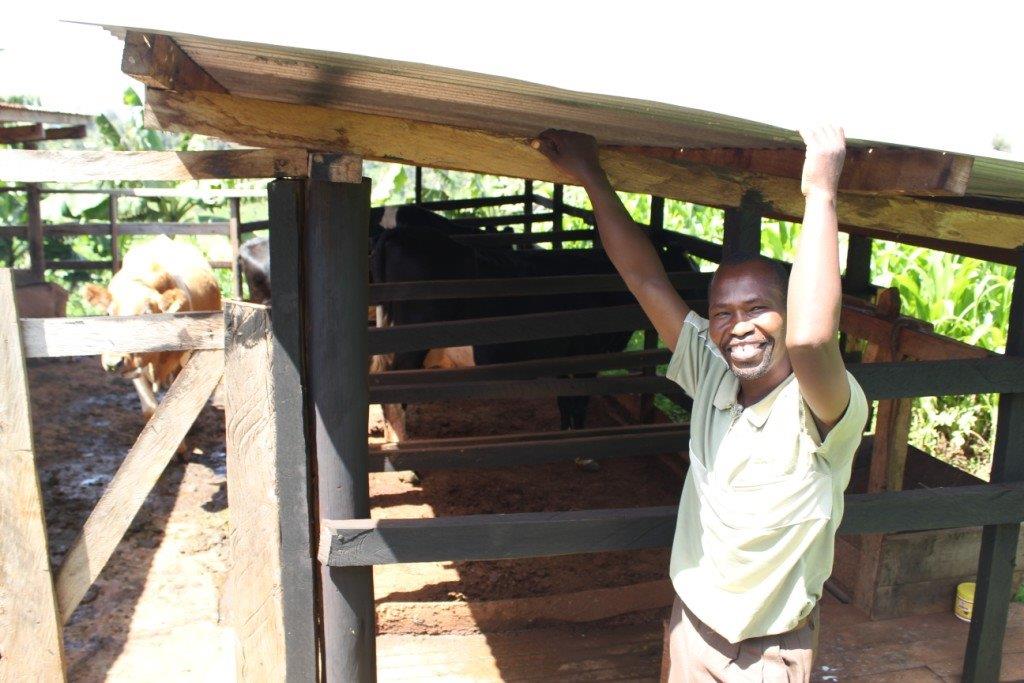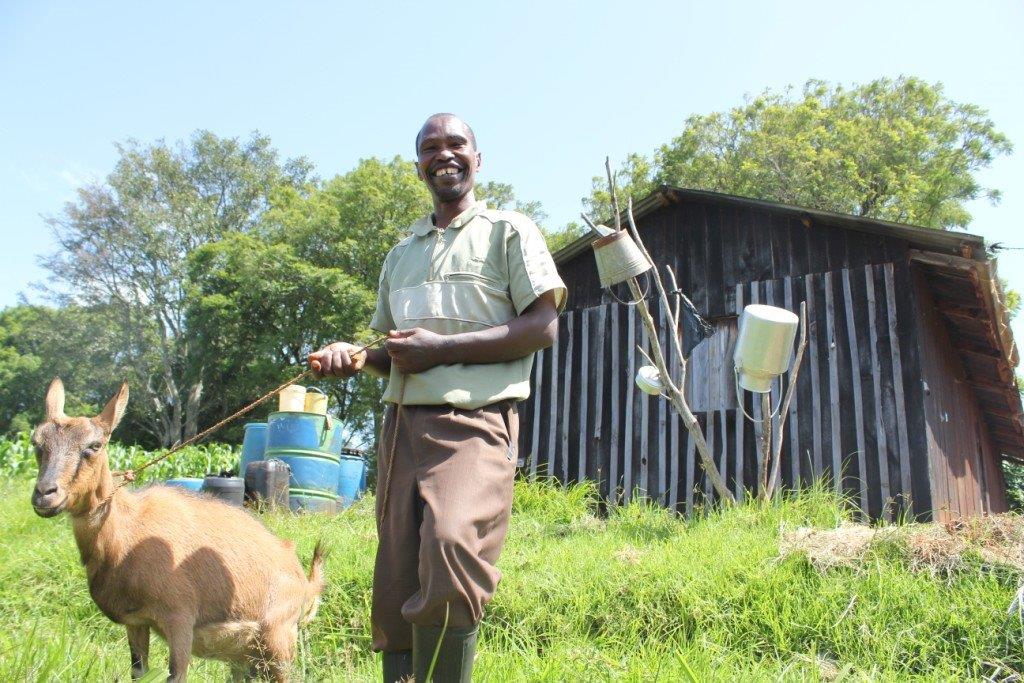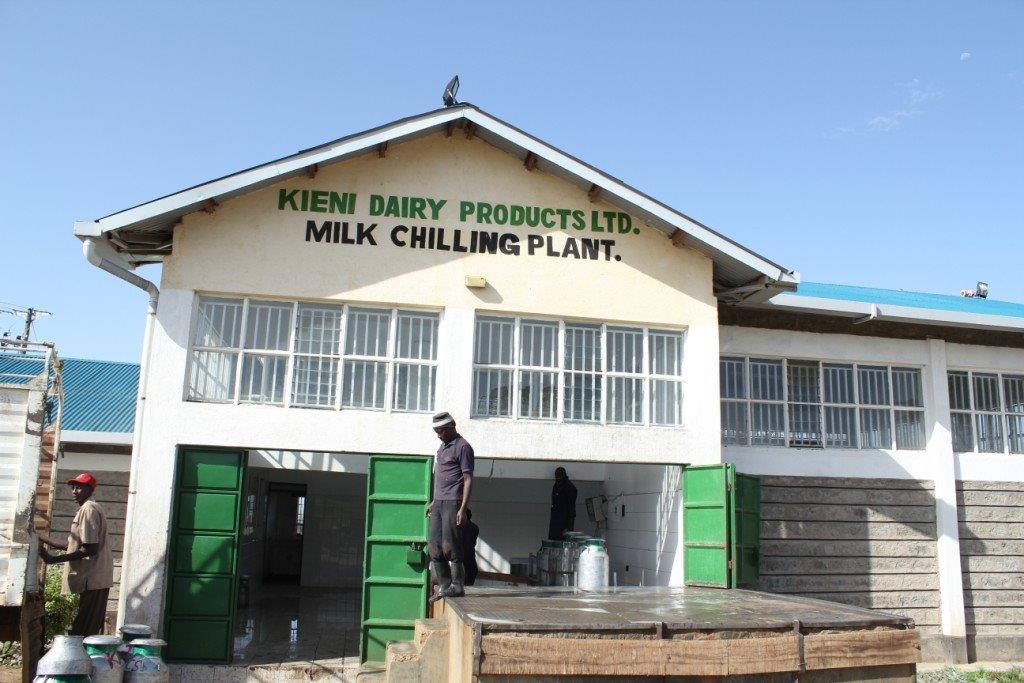Editor's note: Today is World Milk Day. Heifer International project participants around the world have dramatically improved their nutrition and overall wellbeing through the consumption of cow, goat, sheep, and even camel and water buffalo milk. In celebration of World Milk Day, we bring you a story from our East Africa Dairy Development (EADD) program, which is boosting the yields, incomes and nutrition of millions of people in Kenya, Uganda and Rwanda. Original Story by Ann Mbiruru, EADD information and communications officer.
We visited Francis Wanjohi, a small scale dairy farmer, in Kenya's central region. Francis has succeeded in increasing his income by, surprisingly, keeping fewer dairy cows.
 Francis with his cows. Photo courtesy of Heifer International.
Francis with his cows. Photo courtesy of Heifer International.
When the return on investments is high, we naturally tend to want to invest more in the same asset to reap more benefits. Perhaps we buy more stocks or more land. Believe it or not, this is not necessarily the case for small-scale dairy farmers in Kenya. Due to limited availability of land, water and labor, keeping fewer high-quality cows and feeding them better yields better milk production. It's a challenging message EADD preaches, but farmers are adopting these practices with beautiful results.
In 2010, Francis faced a difficult milk production and marketing dilemma. He had two crossbred Friesian cows, but their milk production was low. He used a traditional grazing method, letting the cows graze around the family compound. Francis was unaware that this method of grazing meant the cows expended a lot of energy, and each cow gave an average of 5 liters of milk on a good day, far below their potential (a Friesian cow is capable of producing up to 40 liters per day). His cows were not as healthy as they should have been.
Francis's turning point was when milk vendors stole his money. Despite being "skeptical of cooperatives," he joined the Mweiga cooperative, which is part of EADD. It was the additional services offered by the cooperative hub model that delighted Francis and enriched his enterprising small dairy business the most. He accessed dairy information hitherto unknown to him, a market for his produce and an expansive social network of other farmers like himself.
On his 5-acre piece of land, Francis keeps two cows. He could keep five, giving one acre per cow, but he says two is his magic number because, "I want to farm other crops, and there is money in milk, if you do it right."
 Francis also keeps goats on his small farm. Photo courtesy of Heifer International.
Francis also keeps goats on his small farm. Photo courtesy of Heifer International.
With advice from the cooperative extension officer, Francis put up a modern cattle paddock and learned to mix cost-effective feeds on the farm. The results were soon visible: his cows were healthier and produced more milk. "I now milk an average of 32 liters of milk a day from the two cows. They are healthier, too," he said, animatedly pointing to the shiny black and white cows chewing shredded hay. Planting and conserving his own fodder like calliandra, lucern and napier reduced his production costs.
Francis informed us that he has no intention of increasing his herd, and instead wants to apply the lessons he has learned so his cows increase milk production to at least 25 liters each. "I trust Mweiga will market the milk, so I don't have to worry," he said. His decision is backed by EADD feed specialist Josephine Kirui, who advises, "One dairy cow should have an equivalent of one acre of land for feed and fodder in a year." This ensures the environment is well taken care of and the dairy cows, which are heavy feeders, produce to their maximum.
"The cooperative sells the milk on my behalf, and I access feeds and drugs from the cooperative agro-vet on credit. I also don't have to worry about days when milk was not collected, as the cooperative had a collection point near my home; all that is required of me is to deliver the milk by 5:00am," Francis said. To ensure the farmers deliver quality milk that fetches competitive rates, the Mweiga cooperative trains farmers on the basics of milk hygiene, handling and milking techniques to reduce contamination. Francis invested in metal cans and a good salve, and as a result, he said, "My milk has never been rejected at the collection center."
 Milk chilling plant. Photo courtesy of Heifer International.
Milk chilling plant. Photo courtesy of Heifer International.
The returns on investment through EADD are many. For Francis, increased income has enabled him to see his two children through high school. "I also built a new house," he said proudly.
Francis is one of the 2,275 members of the Mweiga Cooperative Society, through which they supply their milk to the market. Mweiga cooperative is one of EADD's 21 partner cooperatives in Kenya, and part of Kieni Dairy Products Limited. The members of the cooperatives have been trained in feeding and feed preservation and also in breeding by the EADD project extension officials.
